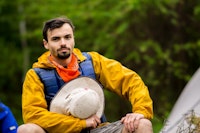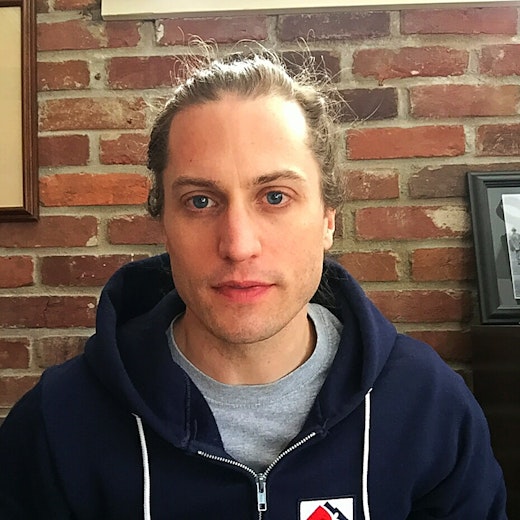
Look, we were all beginner-campers at one time, and most of us have probably spent a fair amount of time combing FAQs on the Internet to get specific questions answered…about gear, about routes…about trail cooking. There’s no shame in having rudimentary questions, and even longtime paddlers occasionally forget or accidentally overlook basic aspects of camping. At Camp Voyageur, the trip director and the counselors handle a lot of these questions; they will pack the right food, plan the routes, do most of the navigating, and handle any necessary paperwork. Still, it can be useful for any camper—and the parents of any camper—to have a good handle on what is in store for that first hallowed Boundary Waters (BWCAW) camping experience.
Here are a few of the most basic beginner questions:
1. Is it free to camp in the BWCAW? This is a really good question because there are a lot of lakes and wilderness areas around the country that are completely free to access. In fact, CV takes overnight trips to a number of such areas each summer—like the Superior Hiking Trail. And if you are planning to enter and exit any area of the BWCAW within the same day (a “day trip”), there is generally no monetary fee. You will need for fill out a day permit, which are available at kiosks of most entry points. However, if you are planning to sleep in the BWCAW for one night or more, you will need to obtain a permit online at Recreation.gov or from a ranger station. Overnight permits per person per trip cost $16/adult and $8.00/youth, plus a $6 registration fee. As stated above, if you’re camping in the BWCAW as part of a CV trip, don’t worry—the permits and paperwork will all be taken care of by the counselors.
2. Is there a limit to where and when I can camp in the BWCAW?
Yes, there are usually limits. You can only camp on designated campsites in the BWCAW. On maps, the campsites are usually indicated with red dots. In-person, the campsites are usually fairly easy to spot because they’re often a little more cleared of trees than the usual shoreline—and they will include a permanent metal fire grate and a latrine. If you are wanting to camp on a particular lake but there is no vacancy at any of the campsites, it is best to search for a vacant campsite on another lake—because camping somewhere that is not a designated campsite can result in a fine from patrolling rangers. If you do find a campsite and you want to stay there for a while, keep in mind that the camping limit is 14 consecutive days at a campsite. CV counselors know where the really good campsites are throughout the BWCAW and have backup plans/routes in case the preferred campsites are already occupied.
3. What clothing and gear do I need? There is a lot that could be written here, and you could easily go to the nearest gear store and spend thousands of dollars on high-end clothing and camping-related gadgets. But the simple answer for gear is that you need the bare essentials for eating, sleeping, and grooming. (Think a few kitchen utensils—cup, bowl, spoon—a sleeping bag and a headlamp, and a toothbrush, that’s it.) The simple answer for clothing is that you need comfortable clothing that will dry quickly and keep you warm. (Think athletic, quick-dry shirts and pants, a spare pair of wool socks, and a fleece hoodie.) Of course, there could be other necessary gear that might vary for each person (for example, medication), but a lot of people are drawn to camping because it strips away the superfluous equipment that so often clutters our lives—so keep that in mind when packing your gear. There are also other requisite items—such as tents, canoes, life vests, toilet paper, stoves—but if you’re being outfitted through CV or signing up for a summer camp session, all of that stuff will be taken care of.
Campers: See our Joe Camper packing list for the bare-bone essentials.
4. What should I eat? Again, there is a lot that could be written here. In fact, there have been entire books written about trail cooking. But the big rule to remember is that you won’t have access to any type of refrigeration when you’re camping in the BWCAW—unless you want to lug around a big cooler filled with ice, and even then, the ice will likely melt after a day or so. So, this means that you will be limited to food that will not spoil quickly. Pasta, ramen, pitas, bagels, mixed nuts, jerky, sausage, energy bars, fresh and dried fruit…these are considered camping food staples for a good reason: they do not need refrigeration and they are filling. Of course, special dietary requirements and personal food preferences will have to be addressed on a person-by-person basis, but in general, think about quick and easy meals that you enjoy at home…and then conjure up ways that you could prepare the same meals in the woods.
5. What if I’ve never done any camping before? For some newbies, the word “camping” might prompt daunting hypothetical images of lost and lonely woodsmen, a group at odds with one another and overcome with exhaustion, mosquito bites, and hunger. That’s unfortunate (and in my personal experience, wholly inaccurate), but it is probably because Hollywood has often seen camping as an opportunity to showcase drama and conflict…and also because newbie campers occasionally do get in over their heads and try to do too much without the necessary know-how. The fact is, your first BWCAW trip does not have to be an extended, grueling expedition—and there is no reason a trip should feel daunting or intimidating prior to embarking. At CV, we usually guide first-time campers into the BWCAW for just a single night or two, and sometimes there are day-trips into the BWCAW prior to that. That is a fine way to start. You can choose to take a trip into the BWCAW on your own—which generally will take more planning and preparation—or you can hire a guide service (such as those offered by CV) to lead your trip and handle much of the arrangements.
6. What if I’ve never done any canoeing before? It is certainly advised that any beginner-canoeists research canoe safety and become comfortable in a vessel prior to taking a trip into the BWCAW. For example, at CV, the first few days of each session are spent practicing canoe skills and discussing the various Dos and Don’ts of watercraft travel with campers: How to paddle on the water, how to perform a rescue on a capsized canoe, how to properly handle a canoe on land, etc. A lot of lakes and rivers around the U.S. have recreational services where canoe instruction can be provided and canoes can be rented hourly for practice. That’d be good to do prior to any BWCAW trip. But panning out a little bit, if you have never done any canoeing, it should be stated that paddling is definitely an endurance workout for your upper body; you might be sore after your first paddling session. Embrace it—we’ve all been there.
7. What’s the best lake? It is all a matter of personal preference. Some people like paddling on big lakes like Snowbank Lake, Kekekabic Lake, and Basswood Lake. Other people like snaking through slim, winding lakes that feel almost like rivers. Frankly, there are fascinating aspects to every lake in the BWCAW. Keep in mind that BWCAW permits (see point #1) designate particular lake entry points—meaning that you will have to enter the BWCAW to begin your trip at the particular lake on your permit. As a side note, although specific lakes can be stunning, I’ve found that the dynamic of the group is far more of a determining factor in the enjoyment of any BWCAW trip than the lakes on which that trip takes place. Have fun, eat good food, enjoy the beautiful scenery, and laugh a lot…and you probably won’t care what lakes you’re paddling on.
8. What if there’s an emergency on my trip? There is too much related to this topic to adequately cover everything with a single answer. Of course, if done correctly, camping is mostly a safe activity—but preparedness is often key. Make sure to carry a good first-aid kit and have it easily accessible on your trip. (The same goes for carrying filled water bottles, as dehydration can quickly turn into a big emergency and ruin a trip). Also, carefully plan an itinerary, and make a point to look at a map beforehand and determine the quickest exit routes—out of the BWCAW and to a hospital—from each lake. It is also important to loop everyone in on these discussions about emergency exits because you never know which person on the trip might be the person in need of an emergency service. At CV, the counselors are certified in first-aid, wilderness first-aid, and lifeguard training. Having a person on a trip that is formally trained in those matters can be invaluable. And make sure someone who is not on the trip knows the itinerary too.
9. Is there cell phone service in the BWCAW or places to charge my devices? To longtime BWCAW enthusiasts, a question about charging stations in the BWCAW might sound ludicrous, but in the modern world—where phones can be charged at malls, airports, restaurants, tourist centers, and roadside rest stops—it’s not a ridiculous thing for newbies to wonder. But to answer the question: No, there aren’t charging stations at BWCAW campsites or portage trailheads. If devices do need to be charged, something like a solar charger would be the most logical option, but that would be something that you would have to provide on your own. There is some cell phone service on certain lakes, but nothing consistent throughout the entire BWCAW. I realize there are times when phones can be useful for emergencies, although beyond that, I personally use the BWCAW as a time to detach completely from gadgetry—and CV likes campers to do the same.



